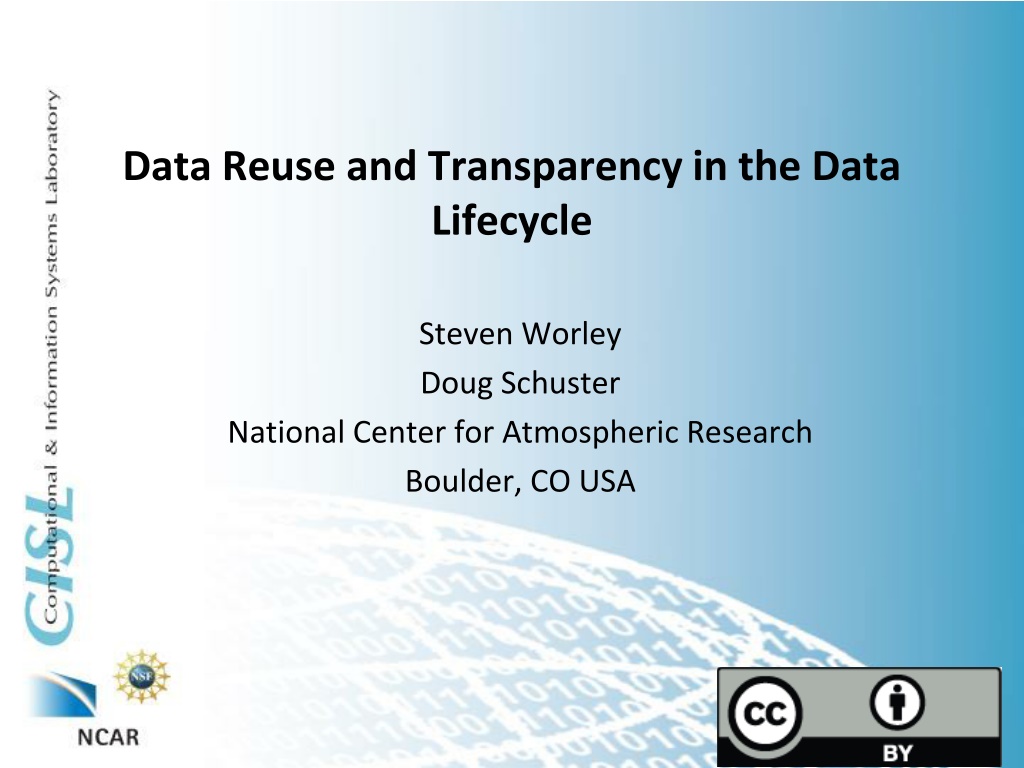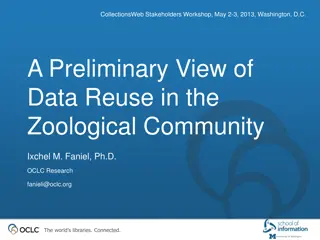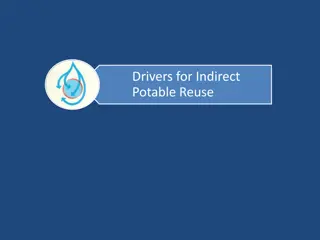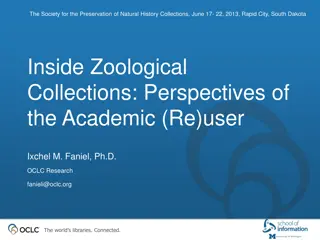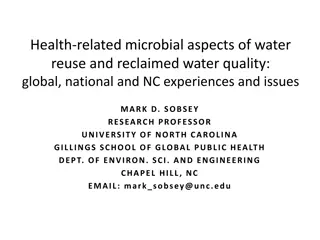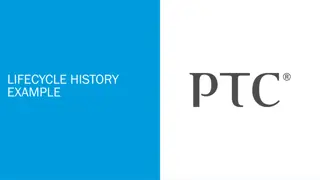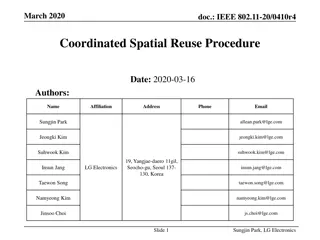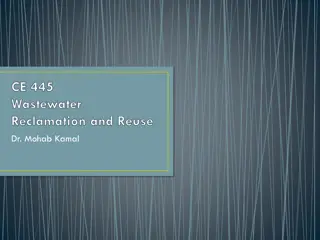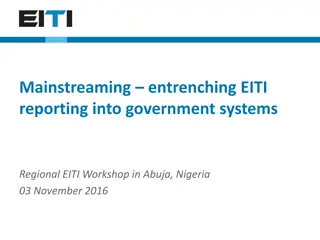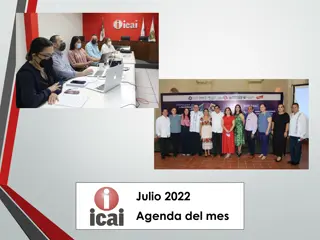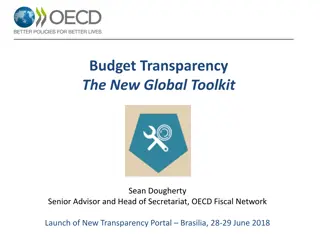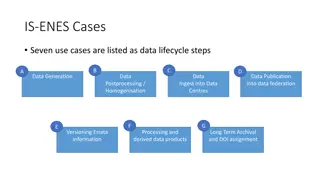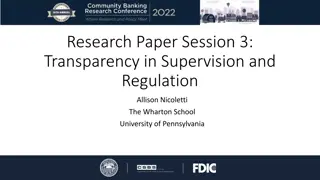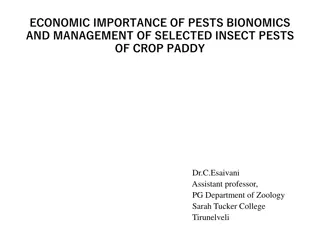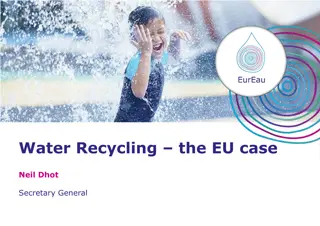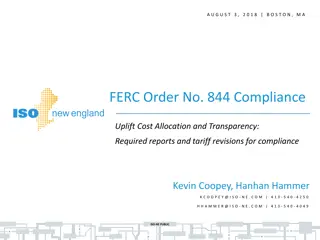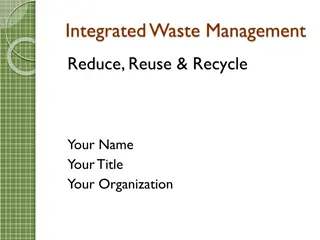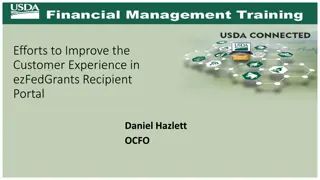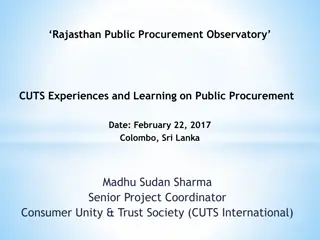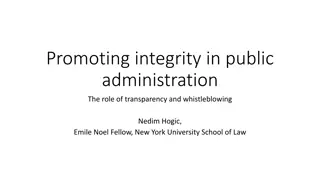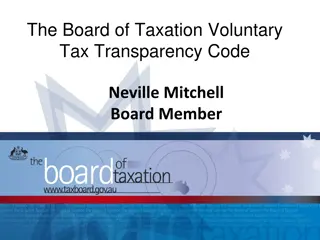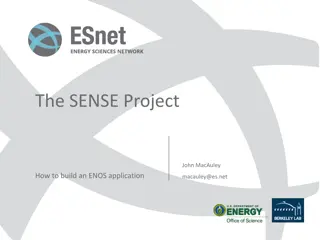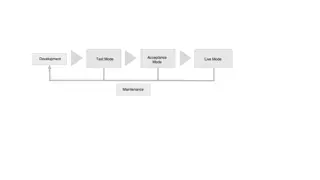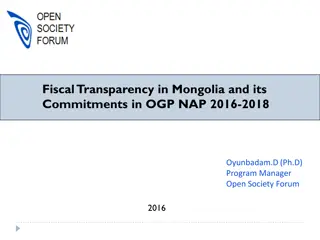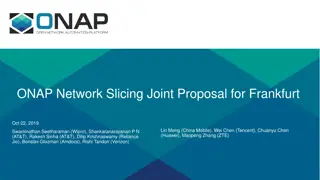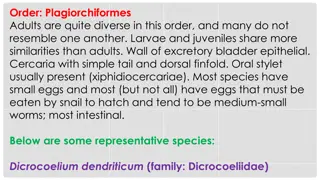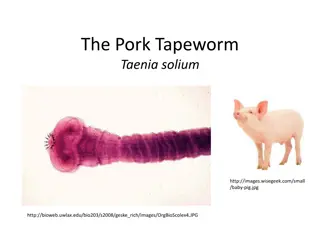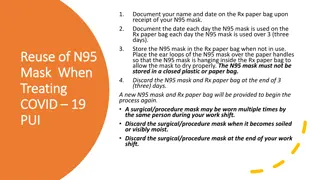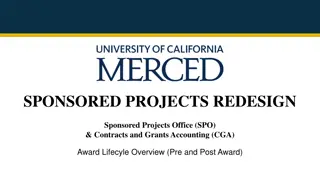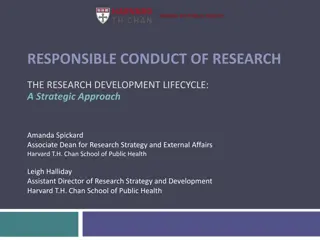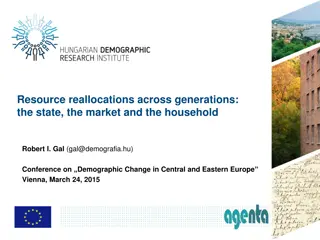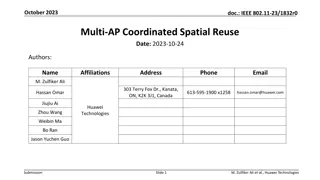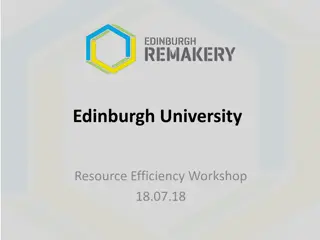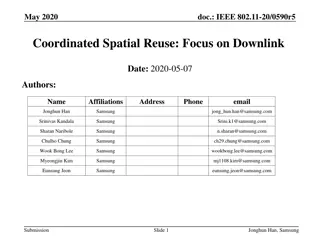Importance of Data Reuse and Transparency in the Data Lifecycle
Data reuse and transparency play a crucial role in supporting fact-based outcomes for various stakeholders, including scientists, policymakers, community leaders, and commercial interests. By enabling expanded usage beyond intended communities and ensuring reproducibility and traceability, data centers/providers can facilitate informed decisions and services for societal benefit.
Download Presentation

Please find below an Image/Link to download the presentation.
The content on the website is provided AS IS for your information and personal use only. It may not be sold, licensed, or shared on other websites without obtaining consent from the author. Download presentation by click this link. If you encounter any issues during the download, it is possible that the publisher has removed the file from their server.
E N D
Presentation Transcript
Data Reuse and Transparency in the Data Lifecycle Steven Worley Doug Schuster National Center for Atmospheric Research Boulder, CO USA
Topics Data Reuse and Transparency What are these data features? Why are they important? Archiving practices Access practices 2 EGU, 23-27 April, Vienna, Austria
What are these data features? Data reuse implies: Expanding usage beyond intended primary community Maintaining reference datasets and building many products from them Data transparency implies: Reproducibility - ability to reproduce data files or products for users Traceability tagging and preserving access details 3 EGU, 23-27 April, Vienna, Austria
Why are Reuse and Transparency Important? Data centers/providers are expected to support fact- based outcomes: Traditionally for science/research Now also for policy makers, community leaders, individual citizens, and commercial interests. 4 EGU, 23-27 April, Vienna, Austria
Supporting New Reuse and Transparency Decisions by policy makers Traceable open access sources Actions by community leaders Planning for societal services Emergencies, water, energy, etc. Usage by citizens and educators Inquisitive science, family activities, safety Science learning Collaborative commercial applications Tighter coupling between engineering and science Wx forecasts for wind energy production Energy companies contribute mesoscale observations 5 EGU, 23-27 April, Vienna, Austria
Archiving practices Curation that assures data authenticity Preserve original data formats, to the max. extent possible. Maintaining 100% content and accuracy serious challenge Use a rich metadata standard A local standard? Generate discipline and cross-discipline standards E.g. ISO, DIF, etc. Create multiple copies Data files, metadata, documentation, and software Disaster recovery not a secondary concern 6 EGU, 23-27 April, Vienna, Austria
Archiving practices Collection completeness and integrity Closely monitor data work flow Account for every file Read every file Gather, check, preserve metadata Compute and preserve file checksums Maintain dataset lineage / provenance Use approved processes to delete datasets (never?) Establish tiered level of service for data Move old / superseded versions to lower level Keep all metadata on the highest tier discoverable! 7 EGU, 23-27 April, Vienna, Austria
Archiving practices Explicit data version tracking Sometimes, internal to files Always, within data management system Include notations in all documentation Establish Digital Object Identifiers (DOIs) Two-way linkage between publications and data Promotes easy path for follow-on research from publications Leverages skills / facilities of libraries richer knowledge base Create data family tree connections 8 EGU, 23-27 April, Vienna, Austria
Dataset Family Tree Example Global and Regional Atmospheric and Ocean Re-analyses NCEP/NCAR, NARR, ERA-40, ERA-Interim, 20CR, OARCA NOC Surf. Flux (1973-2009) WASwind (1950-2009) Etc. Ocean Clouds (1900-2010) JMA SST (1871-2011) HadSLP (1871-2011) HadISST (1871-2011) NOAA OI SST (1981-2011) NOAA ERSST (1854-2011) International Comprehensive Ocean Atmosphere Data Set (ICOADS) Global marine surface observations (1662-2011) 9 EGU, 23-27 April, Vienna, Austria
Dataset Family Tree - Evolution Child Grand Child Child Grand Child Parent Data Center Centric Parent Web Centric Challenges: System of immutable IDs DOIs? Multi-institution preservation commitment Transparency across institutions, accepted standards/governance Promote discovery by sharing metadata, OAI-PMH Future, knowledge-based discovery and access via ontologies within semantic web 10 EGU, 23-27 April, Vienna, Austria
Access Practices User Identification key to reproducibility Record all data access transactions Who received what and when Log product creation constraints from GUIs and web services Log software IDs used for product creation Benefits Reproduce a data access process Feedback to users about data changes Use metrics imply how to improve access 11 EGU, 23-27 April, Vienna, Austria
Metrics Example CFSR 6hrly, GRIB2, 1979-2011, 75TB, 28K fields/time step, 168K files 63% of users are non-US Now exporting 25+ TB monthly Track User activity: - who accessed what and when Subsetting, now ~500 requests/month 12 EGU, 23-27 April, Vienna, Austria
Conclusions Data reuse and transparency are rapidly expanding in importance Many best practices in archive management support reuse and transparency Archive access monitoring is necessary for transparency, reproducibility, and traceability Need significant improvement in linking data family trees and data to publications to advance reuse and transparency 13 EGU, 23-27 April, Vienna, Austria
Research Data Archive at NCAR http://rda.ucar.edu/ 14 EGU, 23-27 April, Vienna, Austria
